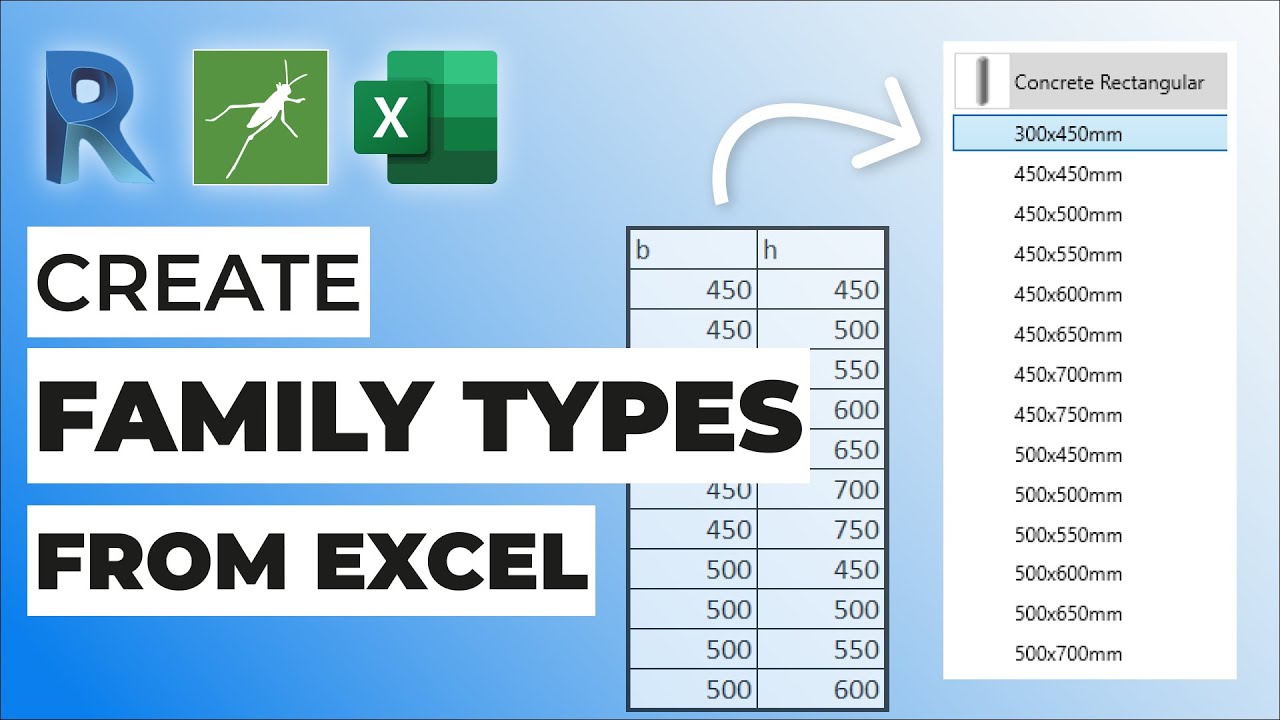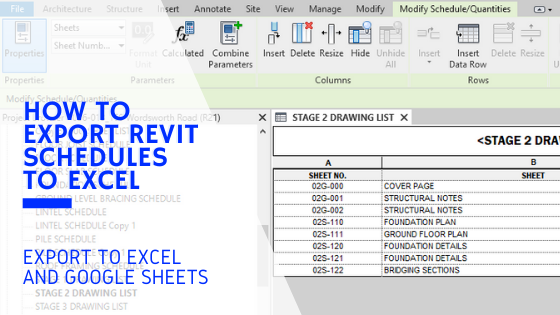Revit Tools for Every Task: Your Ultimate Layout Friend
Wiki Article
Breaking Barriers: Excel Importation Techniques for Advanced Revit Users
Explore numerous data importation methods and master Excel assimilation to improve your Revit modeling capabilities. With our ideas and tricks, you can get over importation difficulties and end up being a real professional in making use of Excel for your Revit tasks.Advanced Revit Users: Leveraging Excel for Importation
You can easily utilize Excel for importation as a sophisticated Revit user. Excel is a powerful device that can substantially improve your operations and effectiveness in Revit. With its capacity to manage huge quantities of data and do complex computations, Excel can be a beneficial asset in managing and arranging your task details.One way to take advantage of Excel for importation is by making use of the "Link Excel" function in Revit. This function permits you to connect an Excel spread sheet directly into your Revit job, allowing you to upgrade and integrate information between both programs. This can be specifically helpful when managing schedules or tracking changes in your job.
Another method to use Excel is by utilizing the "Import/Export" attribute in Revit. This attribute allows you to import and export information between Revit and Excel, giving you the versatility to deal with data in both programs. You can import information from Excel into Revit to produce elements such as rooms, doors, or wall surfaces, and you can likewise export data from Revit to Excel for additional evaluation or reporting.

Exploring Data Importation Methods in Revit Utilizing Excel
Checking out exactly how to import information from Excel into Revit uses effective techniques for incorporating information. When you import data from Excel, you can perfectly transfer information such as area timetables, material listings, and tools data into your Revit project. This process allows you to conserve time and effort by staying clear of manual information entry.To import data from Excel right into Revit, you can use the "Import/Export" attribute. This feature allows you to map the Excel data fields to the matching Revit parameters, ensuring that the info is appropriately appointed within the design. By picking the ideal import choices, you can regulate just how the data is imported and just how it engages with your project.
An additional method for importing data from Excel right into Revit is by making use of Eager beaver. With Dynamo, you can produce customized manuscripts that import data from Excel and adjust it within your Revit task.
Mastering Excel Assimilation for Advanced Revit Modeling
One essential technique is importing data from Excel spreadsheets directly into your Revit model. With a couple of basic steps, you can map the Excel columns to the matching Revit specifications and import the information precisely.Another helpful method is exporting data from Revit to Excel. This allows you to draw out details from your model, such as timetables or product amounts, and examine it in Excel making use of formulas, charts, or various other powerful tools. By leveraging the abilities of Excel, you can execute intricate calculations, develop custom reports, and gain important understandings right into your project.
In enhancement to information transfer, Excel integration can automate repeated tasks in Revit. By producing macros or scripts in Excel, you can automate processes like producing sights, creating sheets, or applying standard households - import excel into revit. This not only saves time but likewise ensures uniformity across your task
To master Excel integration in Revit, it is important to comprehend the information structure and exactly how Revit engages with Excel. By familiarizing on your own with the offered devices and techniques, you can open the full potential of Excel integration and take your Revit modeling to the following level.
Overcoming Importation Obstacles: Excel Techniques for Revit Specialists
When conquering importation difficulties, it is essential to be acquainted with effective Excel techniques that can benefit professionals in Revit. As an advanced Revit customer, you recognize the value of effortlessly importing data from Excel into your tasks. You might encounter various difficulties along the means. By using reliable Excel methods, you can get rid of these obstacles and enhance your efficiency.
Another beneficial strategy is using the "Transpose" feature in Excel. This permits you to transform data from rows to columns or the other way around. When importing data right into Revit, this can be specifically helpful when you have information in a vertical format in Excel, but you need it to be in a straight style in Revit.
Furthermore, making use of Excel formulas such as VLOOKUP and INDEX-MATCH can substantially aid in mapping information from Excel to Revit. These formulas permit you to search for details worths in Excel and recover matching information from an additional column. This can save you time and effort when importing big datasets right into Revit.
Excel Information Importation Idea for Advanced Revit Users
By acquainting on your own with efficient Excel tricks and ideas, you can boost your information importation process as an advanced customer of Revit. Excel is a powerful tool that can significantly promote the importation of data into Revit, conserving you time and raising your efficiency. One helpful tip is to utilize the "Text to Columns" function in Excel to separate data right into various columns based upon a delimiter. When you have information in a solitary column that needs to be split into numerous columns in Revit, this can be specifically valuable. In addition, using Excel's "Paste Special" function permits you to paste information from Excel into Revit while keeping format, such as cell color or font style. When importing information that calls for certain formatting in Revit, this can be especially beneficial. An additional useful method is to utilize Excel's "Find and Change" feature to promptly make changes to your information prior to importing it into Revit. As an example, you can conveniently replace particular text or characters with others, saving you the time and initiative of by hand editing and enhancing the data in Revit. By making use of these Excel tips and from this source tricks, you can enhance your data importation process and come to be a lot more skilled in utilizing Revit.
Verdict
You have actually now discovered valuable strategies for importing information from Excel right into Revit as a sophisticated user. By leveraging the power of Excel combination, you can streamline your modeling procedure and get rid of any importation tests that may occur. With these techniques and ideas, you will have the ability to grasp information importation and enhance your Revit abilities. So go ahead, damage those obstacles and master your Revit jobs!
When importing data right into Revit, this can be particularly useful try this when you have data in an upright format in Excel, yet you need it to be in a horizontal format in Revit.
Furthermore, utilizing Excel formulas such as VLOOKUP and INDEX-MATCH can substantially help in mapping information from Excel to Revit. Additionally, making use of Excel's "Paste Special" feature permits you to paste data from Excel into Revit while maintaining format, such as cell color or font design.
Report this wiki page